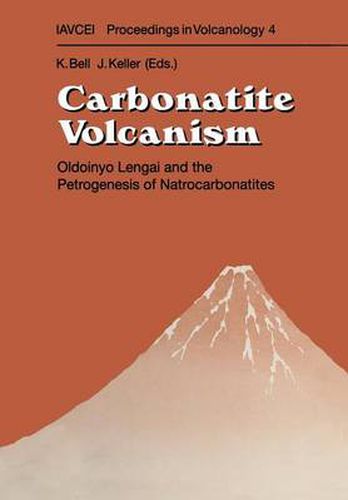Readings Newsletter
Become a Readings Member to make your shopping experience even easier.
Sign in or sign up for free!
You’re not far away from qualifying for FREE standard shipping within Australia
You’ve qualified for FREE standard shipping within Australia
The cart is loading…






This title is printed to order. This book may have been self-published. If so, we cannot guarantee the quality of the content. In the main most books will have gone through the editing process however some may not. We therefore suggest that you be aware of this before ordering this book. If in doubt check either the author or publisher’s details as we are unable to accept any returns unless they are faulty. Please contact us if you have any questions.
During the last few years, carbonatites have received a considerable amount of attention. Some of this interest was no doubt kindled by the importance of volatiles in the Earth’s mantle, particularly CO , by the fact that carbonatites 2 can be used to monitor the chemical evolution of the sub-continental upper mantle, and by the fact that carbonatites may be effective metasomatizing agents at both mantle and crustal levels. The interest in Oldoinyo Lengai has extended over at least 100 years, but it was not until the eruptions of 1960, when the unique carbonatitic nature of its lavas was recognized, that the volcano took on special significance in volcanology and igneous petrology. The recognition of carbonatitic flows coin cided with the first successful laboratory experiments carried out on carbonatitic melts. Since then, Oldoinyo Lengai has formed a cornerstone in all carbonatite discussions. It is probably true to say that the findings from Oldoinyo Lengai have dominated our ideas about carbonatites, in spite of the fact that the alkali rich, natrocarbonatitic lavas of Oldoinyo Lengai are markedly different from other carbonatites.
$9.00 standard shipping within Australia
FREE standard shipping within Australia for orders over $100.00
Express & International shipping calculated at checkout
This title is printed to order. This book may have been self-published. If so, we cannot guarantee the quality of the content. In the main most books will have gone through the editing process however some may not. We therefore suggest that you be aware of this before ordering this book. If in doubt check either the author or publisher’s details as we are unable to accept any returns unless they are faulty. Please contact us if you have any questions.
During the last few years, carbonatites have received a considerable amount of attention. Some of this interest was no doubt kindled by the importance of volatiles in the Earth’s mantle, particularly CO , by the fact that carbonatites 2 can be used to monitor the chemical evolution of the sub-continental upper mantle, and by the fact that carbonatites may be effective metasomatizing agents at both mantle and crustal levels. The interest in Oldoinyo Lengai has extended over at least 100 years, but it was not until the eruptions of 1960, when the unique carbonatitic nature of its lavas was recognized, that the volcano took on special significance in volcanology and igneous petrology. The recognition of carbonatitic flows coin cided with the first successful laboratory experiments carried out on carbonatitic melts. Since then, Oldoinyo Lengai has formed a cornerstone in all carbonatite discussions. It is probably true to say that the findings from Oldoinyo Lengai have dominated our ideas about carbonatites, in spite of the fact that the alkali rich, natrocarbonatitic lavas of Oldoinyo Lengai are markedly different from other carbonatites.